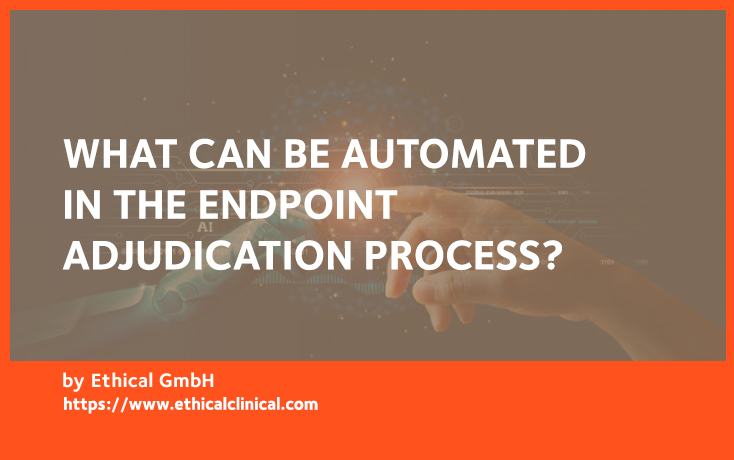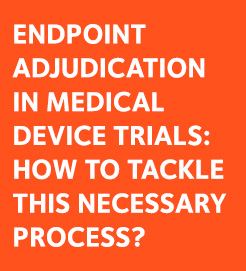For many people, automation means saving time on repetitive tasks. The truth is that automation is much more. With the development of computer system technologies and Artificial Intelligence (AI), automation is no longer limited to performing a pre-defined sequence of actions in a repetitive way but can also encompass complex cognitive actions. In the clinical endpoint adjudication field, this may prove extremely useful and convenient in many ways as we will see below. Welcome to the new world of automation in clinical trials.
Clinical endpoint adjudication is the work of highly specialized experts reviewing complex clinical cases, so complex indeed that regular medical professionals may have difficulty resolving. Hardly a field for automation one would think. But scratching below the surface reveals a flurry of underlying processes that are either performed by sponsor or CRO staff members or need to be pre-planned and executed automatically. Especially in large studies with many adjudication cases, these processes can become cumbersome and error-prone adding a quality risk to the sheer workload.Importing events, assembling packages, redacting personal information can all be automated
Import from other systems is the first task that can and should be automated whenever possible. This concerns all the adjudication cases and could mean a large amount of data to import. Furthermore, when subsequent imports occur, there may be a need to recognize already treated cases and this sorting is best performed by machines than by humans.Preparing adjudication packages is another tedious task that requires attention and can be heavy at times. A computer can be programmed to assemble various documents and data from different sources to create a package and can also verify previously assembled packages for correctness and completeness. Triggers for such action can also be automated based for example on the availability of all required parts.
Diving deeper into the content of the information used to adjudicate clinical endpoints, patient identification and document redaction are only some of the areas where automation can contribute substantially to the speed and quality of the whole process.
Finally, actions such as load balancing between reviewers and sending reminders based on dates or other triggers, for example reminding a data manager of a missing data point, is also something computers can prove to be very good at.
All this, an automated computer system dedicated to endpoint adjudication can do by linking to other systems, whether internal or external, and retrieving leading information such as dates, availability of data, notice of changes etc. that dictate action. More advanced computer work may encompass identifying certain conditions, keywords, relations etc. and selecting from a list of possible actions or even creating new combinations of actions as appropriate.
Human oversight remains essential, validation and testing mitigate risks
Of course, as with any advanced operation, there are inherent risks to automation of clinical endpoint adjudication. Over-automation is probably the most common. While humans appear slow and imprecise compared to machines, they have some important advantages such as being able to multi-task, identify unpredicted situations and learn from experience. Preliminary tests and validation of the system where all foreseeable situations are simulated and resolved will cover the majority of situations. But leaving it all to the machines may result in missing unusual errors or omissions so automation with human oversight of the results remains the best combination.Automation and re-adjudication
In the area of clinical endpoint adjudication, automation can easily extend to the re-adjudication situation where cases need to be reviewed again because of subsequent changes in the data or are randomly selected for the determination of intra- and inter- variability. There is neither a need, nor an advantage in handling this part manually. Automation can be very efficient in identifying for example events previously adjudicated and highlighting the changes that trigger a new review.In conclusion, even though we have not yet reached the stage where all work could be done by computers, there has been much progress in offloading important tasks to machines, still reserving the most important cognitive actions for humans.
DOWNLOAD NOW THE FREE ENDPOINT ADJUDICATION HANDBOOK
The Complete Manual / Reference Book (34 pages) with all the topics related to the Independent Endpoint Adjudication Committees Management








